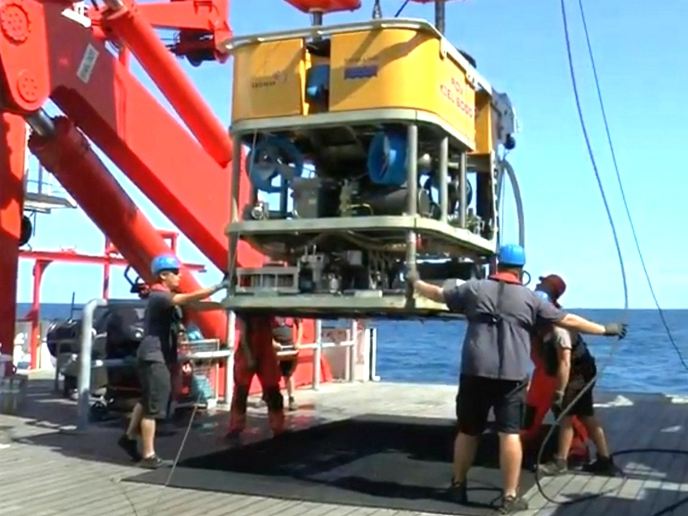A high-tech robotic diver analyses the Earth’s mineral riches on the ocean floor
The deep-sea floor is a vastly unexplored treasure trove of cobalt crusts, manganese nodules and polymetallic seafloor massive sulphides. These formations could make a significant contribution to burgeoning demands for electronics and technologies relying on rare and expensive metals. The global market for deep-sea mining is expected to grow from about USD 650 million in 2020 to USD 15.3 billion by 2030. The ambitious EU-funded ROBUST project has delivered an autonomous robotic survey and analysis system that will support this development while protecting the environment. It will also be an invaluable tool for oceanic research expeditions.
(Laser) lights, camera, action
Current deep-sea exploration of polymetallic nodules involves retrieving raw samples from the seabed using remotely operated vehicles (ROVs) tethered to exploration ships. The samples are brought up to the surface for analysis in a time-consuming, expensive and inefficient process. ROBUST set out to make deep-sea mining cost-effective and environmentally friendly. Ferromanganese crusts and manganese nodules are rich in industrially important nickel, copper, cobalt, lithium, molybdenum, manganese and rare earth elements, and seafloor massive sulphides are rich in copper, zinc, iron, gold, and silver-rich sulphide mineral deposits. Project coordinator Graham Edwards explains: “We use an autonomous underwater vehicle (AUV) to deploy a custom-made laser system capable of identifying manganese nodules at 300 m sea depth. We also developed a laser-induced breakdown spectroscopy (LIBS) system with in situ automated copper, manganese and zinc nodule identification capabilities integrated with seafloor massive sulphides detection capability. This powerful LIBS system is thus able to identify critically important mining targets under the sea in situ.” The systems are not only high-tech but must also work in the extreme subsea environment. Moving over the ocean floor, the ROBUST system creates 3D maps from data obtained via a combination of hydro-acoustics, laser scanners and photogrammetry. “A convolutional neural network pattern recognition algorithm detects manganese nodules in real time. When the AUV is within a few metres of the target, onboard cameras trigger precise vehicle positioning,” explains Project Leader James Essien. Once the AUV is over the target, it positions its underwater vehicle manipulator system with the integrated LIBS system for optical, non-contact, in situ chemical analysis in real time. A double-pulse laser mechanism boosts the signal strength. “The first pulse initiates a gas cavity and the second pulse enables a hotter, longer excited state with the acquired spectrum identifying the nodule,” Essien explains. Fitted to an ROV, the LIBS system has operated at ocean depths greater than 4 000 m.
Moving forward – and downward
Edwards summarises: “Deep-sea mineral surveyors can soon expect lower ocean bed survey costs, more accurate results from in situ measurement and negligible environmental impact of their work.” As the technology moves toward final testing and completion, the team has developed a business plan to bring commercial mining companies and oceanic research organisations on board for a mineral-seeking voyage to the bottom of the sea.
Keywords
ROBUST, deep-sea, AUV, laser, manganese, LIBS, mineral, ocean, mining, robotic, underwater, seafloor massive sulphide, cobalt, metal, laser-induced breakdown spectroscopy, convolutional neural network







